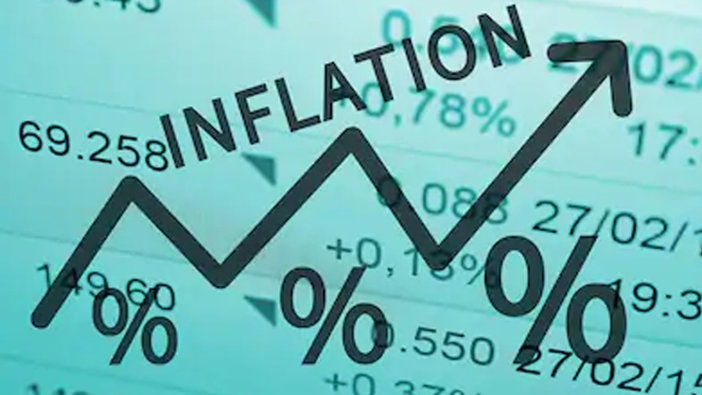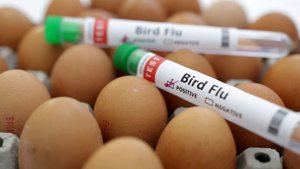
Germany’s Inflation Hits 2.4% in September Surge
German inflation accelerated to 2.4% in September, its highest level this year, reflecting strong price pressures across services and moderating energy declines.
German inflation accelerated for a second straight month in September, with the headline consumer price index (CPI) rising 2.4% year over year and 0.2% month over month, according to a flash estimate from the Federal Statistical Office. The increase, which exceeded consensus expectations, marks the highest annual rate so far in 2025 and nudges price growth closer to—but still slightly above—the European Central Bank’s 2% target. Core inflation (excluding food and energy) edged up to 2.8%, signaling persistent domestic price pressure.
The uptick in Germany dovetails with a broader euro-area pattern: eurozone inflation also firmed in September to 2.2%, driven chiefly by services, while energy’s drag narrowed—a backdrop that supports expectations for the ECB to hold rates steady at its next meeting.
The quick read: what changed in September
- Headline CPI (Germany): 2.4% y/y, 0.2% m/m (flash).
- Core CPI (ex-food & energy): 2.8% y/y (flash).
- Energy: still cheaper than a year ago, but the decline has moderated.
- Services: price gains remain comparatively strong.
A separate harmonized gauge (HICP), used for euro-area comparisons, similarly shows 2.4% inflation for Germany, with energy −0.7% y/y and food around +2.9%. The HICP reading excluding food and energy (a proxy for core) is 2.6%. Differences between CPI and HICP arise from methodology and basket weights.
What’s driving the uptick?
Energy’s smaller drag, services’ steady climb
The biggest mechanical shift is energy: prices are still down versus a year ago but by less than in prior months, easing the deflationary pull from this category. At the same time, services inflation—often tied to wages and domestic demand—remains sticky. Market trackers peg German services inflation around 3.4% in September, up from roughly 3.1% in August.
Food prices: mixed relief
Food inflation has cooled versus 2023’s peaks but remains positive. On the HICP basis, food is up about 2.9% y/y. Within the national CPI, some sub-categories show dispersion—processed items and restaurant meals remain firmer than raw staples—reflecting lingering cost pass-through in supply chains.
State-level signals hinted at the national rise
Before the national print, several large states reported higher September inflation, including North Rhine-Westphalia (2.3% y/y), Bavaria (2.4%), Baden-Württemberg (2.7%), and Lower Saxony (2.3%), a constellation that pointed to a countrywide acceleration.
How Germany compares within the eurozone
Germany’s 2.4% sits a shade above the euro-area’s 2.2% flash reading. The common theme across the bloc is firmer services offsetting less negative energy, with core inflation broadly stable. This configuration is consistent with the ECB’s messaging that inflation is near target but still requires vigilance—especially if wage dynamics keep services prices elevated.
ECB outlook: a data-dependent pause looks intact
Markets and economists widely expect the ECB to hold its deposit rate at 2.0%, extending the policy pause after a sequence of cuts that began in 2024. Policymakers have lately argued that the economy is in a “good place,” even as they acknowledge two-sided risks. September’s modest inflation re-acceleration—led by services—tilts against near-term easing, reinforcing a watch-and-wait stance.
Eurozone-wide, officials see inflation drifting below target in 2026, which complicates the timing for any next move. For now, the bar for resuming cuts appears high, and the September prints are unlikely to lower it.
What it means for households and firms
For households, the headline rate’s climb means less relief than hoped on everyday costs. The sharper pressure remains in services—from rents and repairs to personal care—areas where prices are typically slower to fall. Energy bills, while easier than last year, no longer provide the same cushion as the earlier, steeper declines.
For businesses, wage-sensitive cost lines still matter. The modest re-acceleration in core measures suggests labor-intensive services will keep feeling margin pressure unless productivity and pricing power improve. Manufacturers face a somewhat different mix: energy inputs have stabilized, but demand conditions remain uneven, and pass-through is harder with a soft consumer backdrop.
| Indicator | YoY % | Notes |
|---|---|---|
| CPI (national) | 2.4 | Highest in 2025 so far. |
| CPI core (ex-food & energy) | 2.8 | Sticky domestic pressures. |
| HICP (harmonized) | 2.4 | Euro-area comparable metric. |
| HICP: Energy | −0.7 | Smaller decline vs. early 2025. |
| HICP: Food | +2.9 | Cooled from 2023 peaks. |
| HICP ex-food & energy | 2.6 | Core proxy. |
| Services inflation | ~3.4 | Up from ~3.1% in Aug. |
The broader macro context
September’s data land amid a fragile German recovery. While price growth is no longer the chief macro headwind, consumer demand has yet to mount a decisive comeback. Retail sales and import price trends point to caution, and unemployment has drifted higher, tempering upside risks to inflation from the demand side. That mix—soft real activity and slightly firmer prices—keeps Germany near the euro-area mean: inflation near target, growth sub-trend, and policy on hold.
Across the bloc, service-sector wages and administrative price resets (e.g., public transport, regulated fees) could keep a floor under inflation. Conversely, global goods disinflation, improved supply chains, and still-moderating energy costs should cap the upside. That tug-of-war helps explain why core has hovered in a narrow band even as headline fluctuates with energy.
Why the “highest this year” label matters
Reaching the year’s high at 2.4% does not imply a return to the inflation scares of 2022–23. Rather, it reflects base effects (easier comparisons from late 2024), less negative energy, and the gradual unwind of goods-disinflation tailwinds. It is notable that core moved up only a tenth, consistent with an economy that is not overheating. The ECB’s signal that policy is “in a good place” fits this pattern of contained but persistent price pressure.
What to watch next
- Final HICP breakdown (mid-October): Will services hold near the current pace, and how do goods prices compare to August?
- Wage agreements into Q4: Sectoral deals in services will set the tone for 2026 core disinflation—or lack thereof.
- Energy base effects: Another step-down in the year-ago comparison could shave headline in Q4, but geopolitical and supply risks remain the wild card.
- ECB’s October 30 meeting: A continued pause is the base case; communication on the growth/inflation balance will shape 2026 rate expectations.
Why did inflation rise if energy is still cheaper than last year?
Because the decline in energy costs narrowed—from steep negatives earlier in 2025 to a milder −0.7% now—reducing the drag on headline CPI. At the same time, services stayed firm, lifting the overall index.
Is core inflation getting worse?
Not dramatically. Core ticked up to 2.8%, a modest move that still signals underlying pressures (particularly services). It’s consistent with a slow grind toward target rather than a renewed flare-up.
Does this change the ECB’s near-term path?
Probably not. With euro-area headline at 2.2% and core steady, the ECB has cover to stay on hold, keeping options open if growth weakens later. Markets have already pared back expectations for additional cuts.
How does Germany’s print affect consumers now?
Households won’t feel a sudden shock; the difference between 2.2% and 2.4% is incremental. But the composition matters: services—things people buy frequently—are where inflation is stickier, which can feel more persistent in day-to-day budgets.
Bottom line
Germany’s inflation is drifting toward target but not quite there, with services doing most of the heavy lifting as energy’s drag fades. The September flash at 2.4% reinforces the ECB’s hold bias and underscores a familiar reality of the post-pandemic cycle: getting from 3% to 2% was the easy part; staying near 2%—without smothering growth—will be harder. For now, the data argue for patience rather than pivot.
Source: Destatis Trading Economics Bundesbank






